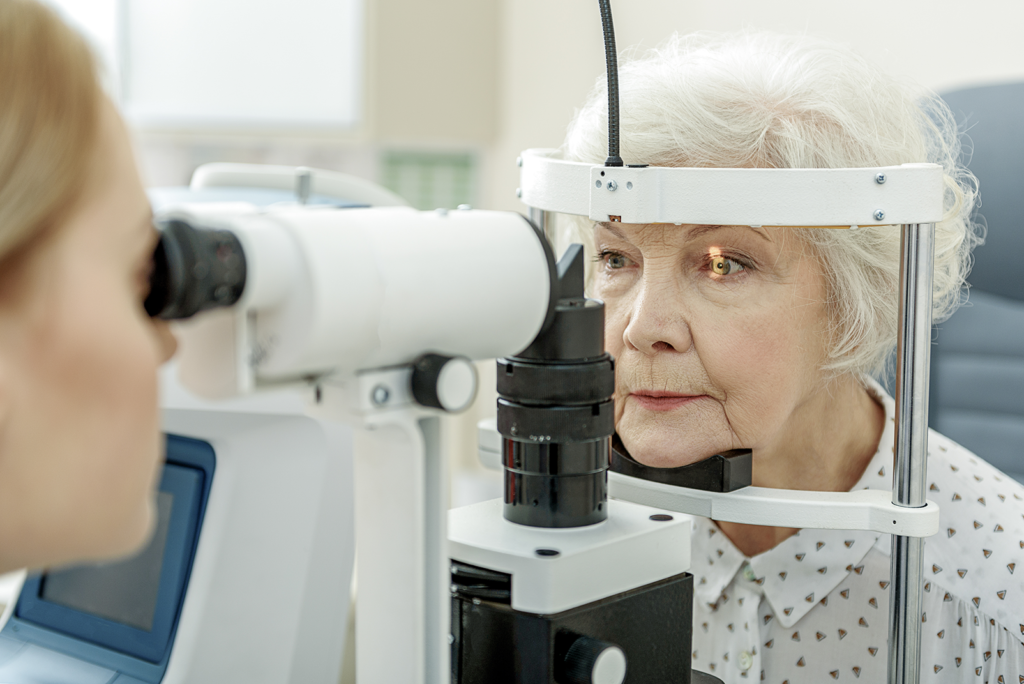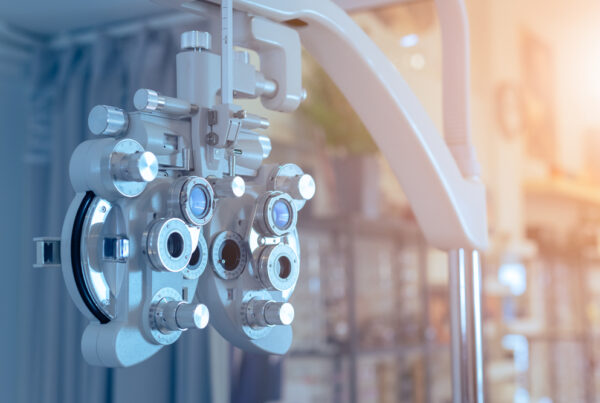Glaucoma is the leading cause of irreversible blindness worldwide and the statistics are staggering.

It is estimated that around 80 million people have glaucoma worldwide, and that an estimated 300,000 Australians have been diagnosed. More importantly however, is that approximately 50 per cent of individuals with glaucoma are unaware that they have the disease, and this number may be even higher in underdeveloped countries.
As the numbers are expected to increase exponentially, it is a growing public health concern that needs more attention and effective eye health systems.
Scheduled between the 12th to 18th March, World Glaucoma Week is a unique initiative that puts a spotlight on glaucoma and the need for prompt diagnosis and treatment to prevent needless vision impairment.
What is glaucoma?
Glaucoma is the name given to a group of degenerative eye diseases where vision is lost due to damage to the optic nerve. It causes irreversible vision loss due to damage to the optic nerve. Unfortunately, there is no cure for glaucoma, and vision loss is irreversible.
While there are different types of glaucoma, Primary Open-Angle Glaucoma (POAG) is the most common, accounting for 90 per cent of glaucoma cases in Australia. Known as the ‘silent thief of sight’ there are no obvious symptoms in the early stages of POAG. Damage progresses slowly and destroys vision gradually, starting with peripheral vision. This early vision loss often goes unnoticed until a significant amount of damage to the optic nerve has already occurred.
On the other hand Acute Angle-Closure Glaucoma can cause severe eye pain associated with nausea and vomiting, headache, watery eyes, sudden onset of blurred vision or seeing halos around light. This is a medical emergency and immediate treatment is required.
While vision loss can’t be restored, early diagnosis and treatment can delay or halt the progression of the disease. That is why it’s so important to detect the problem as early as possible.

What causes glaucoma?
Glaucoma is usually caused by an increase in intraocular pressure (IOP) which can damage the optic nerve. The level of elevated eye pressure which causes progressive damage to the optic nerve varies between people. Some people can have high eye pressure without glaucoma (known as ocular hypertension) while other people can have normal eye pressure with glaucoma (known as normal tension glaucoma).
The eye is constantly producing a clear liquid called aqueous humor which it secretes into itself. This fluid nourishes the eye and holds the eye in shape. The fluid is then drained out though an area called the anterior chamber angle or drainage angle. If there is damage to the drainage angle, the rate at which the eye produces the aqueous humor then becomes greater than the rate the eye can drain it – causing high IOP in the eye.
This increased pressure begins to damage the optic nerve which lies at the back of the eye. The optic nerve is made up of approximately one million nerve fibres which connect the back of the eye to the brain. Damage to the cells of the optic nerve results in irreversible damage to your eyesight.
Who is at risk?
Anyone may develop glaucoma, but the incidence increases with age. About 1 in 10,000 babies are born with glaucoma, by age 40 about 1 in 200 have glaucoma, rising to 1 in 8 at age 80.
Some people do however, have a higher risk of developing glaucoma – they are people who:
- Have a family history of glaucoma
- Have high eye pressure
- Are aged over 50
- Are of African or Asian descent
- Have diabetes
- Are short or long sighted
- Have been on a prolonged course of cortisone (steroid) medication
- Experience migraines
- Have had an eye operation or eye injury
- Have a history or high or low blood pressure
- Experience obstructive sleep apnoea

Diagnosis and treatment
To eliminate glaucoma blindness, there are several issues that need to be addressed.
Fortunately, for many patients treatment can halt the damage – that means the earlier the diagnosis, the more vision there is to save and the less likely the person is to become blind. Periodic testing allows early diagnosis to prevent visual disability, therefore, the World Glaucoma Week aims at alerting members of the broader community to the need for regular simple eye checks, which allow earlier detection and, hence, saved sight.
During a glaucoma exam the eye health practitioner will:
- Measure the eye pressure, also known as intraocular pressure (IOP).
- Inspect the eye’s drainage angle.
- Examine the optic nerve for damage.
- Test the central and peripheral (side) vision.
- Take a picture or computer measurement of the optic nerve.
- Measure the thickness of the cornea.
It is important to remember that glaucoma cannot be self-detected. Only an optometrist or an ophthalmologist can determine whether you have glaucoma or not.
Although there is no cure for glaucoma, most people are able to manage their condition successfully with the use of eye drops, laser treatment, surgery or a combination of all three.
It is important to be educated, informed and feel involved in your glaucoma treatment, particularly concerning eye drops; the mainstay of glaucoma treatment. Patients who are educated on the importance and goals of their treatment tend to more successfully adhere to their treatment and therefore have a better outcome.









